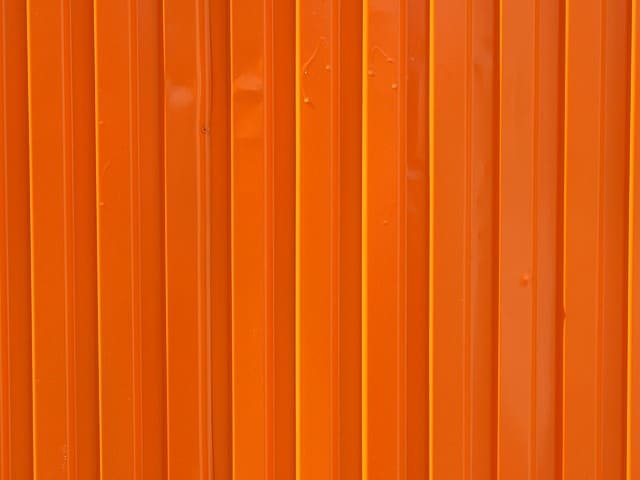We see maritime containers everywhere now. They are being used as homes, pools, cafes, and offices. With this, it’s very easy to forget where the maritime containers came from and what their original purpose was and still is. We’ve already discussed how maritime containers changed the world and also how and who invented them.
We know that containers come in all kinds of shapes and sizes, and today, we want to see exactly how are sea containers manufactured. In a modern world where machines make many things, it was surprising to see that this is not the case for maritime containers. These containers are carefully crafted, almost artistically, in how they are made.
Step 1: Wall Panels

The first task is to make the wall panels. To do this, large sheets of steel are cut into sheets of 8 feet by 3 feet. The sheets are sandblasted and corrugated. The sheets are corrugated to add strength to them, and this is what gives maritime containers their wave-like texture. Once the sheets are corrugated, they are positioned and welded to create the wall panel. The final step to complete the wall panel is to weld square tubes at the top and bottom of the wall. This tube is later used to weld the floor and roof to the wall.
Step 2: Assembly of the Floor Frame
Once the wall panel is completed, it is necessary to assemble the floor frame. The floor frame is predominantly formed by I-beams. Two longer I-beams are arranged perpendicular to each other. Then, smaller I-beams are welded between the longer I-beams to create a base similar to a slab. Once the welding is complete, the floor frame is sanded with a flap disc angle grinder to ensure there are no rough welding joints.
Step 3: Doors and Corner Posts
The front and rear of the container now need to be made. Once again, just like the side walls, the doors are primarily made of corrugated steel. Once the corrugated steel is cut to size, it is wrapped around a square steel tube. Then, the doors are sanded again to remove any rough welding joints. Then, the corner posts are welded to the I-beams, and then the individual doors are welded in place within the I-beams.
Step 4: Completing the Box
The maritime container truly starts to take shape now, as the door frames are positioned on top of the floor frame. The door frame is welded down, and then the wall panels are also turned and welded in place. Finally, the roof panel is lowered onto the container and welded, completing the container shell.
Step 5: Painting and Coating

The container is taken into the painting workshop and is painted. The primer (bottom layer) is the first layer of paint sprayed onto the container and is a preparatory coating. This ensures that additional layers of paint adhere better to the container; it also provides an additional layer of protection for the container. Once the primer has dried, the container is sprayed with paint several times. Multiple layers of paint are used to ensure that the container is protected against the harsh elements of sea travel, such as salt and water.
Step 6: Flooring
The next step is to lay the wooden floor on top of the floor frame. Six plywood panels are used for the container floor. However, before they are laid, the panels are varnished with a protective coating. This protective layer ensures that insects and other pests are not present in the wood. Once the panels have dried, they are placed inside the container and screwed onto the steel floor beams.
Step 7: Decals, Identification, and Doors

The container can now be decorated with the company logo and any advertisement. These are usually stickers with adhesive backing. The container also needs to be labeled with its unique identification code that can be used to identify the container from anywhere in the world. The identification code has eleven alphanumeric characters, each of which corresponds to a meaning. The first three letters are used to identify the container owner.
In the picture, ‘TGH’ refers to Textainer, one of the world’s largest maritime container companies. The fourth character is a product group code that can be U, J, or Z.
U = maritime container
J = any equipment that can be connected to a container, i.e., a power unit
Z = trailer used to transport a container.
The characters from the fifth to the tenth constitute a serial number assigned by the container owner. This serial number is used by the specific container owner to identify the container. The final character is known as a check digit. It is used to verify the preceding ten characters.

Once the container has been labeled, the door handles and locking mechanism are attached. Then a rubber seal is wrapped around the doors to ensure they are watertight.
Step 8: Waterproofing and Testing
The bottom of the container is then sprayed with a waterproof sealant. Once the sealant has dried, the container is soaked in water and then inspected for leaks or defects. If no defects or leaks are found, the container is complete and can be transported to its intended location.
It’s a quite impressive process, isn’t it? It’s even more impressive to think that these new 20-foot containers can be purchased for a few thousand dollars.
While we recommend building with recycled containers to help the environment, there are certain advantages to building with new maritime containers. One of the biggest advantages is that you know exactly where the container has been and what has been transported inside it.
How are sea containers manufactured 40-foot
Container Manufacturing from Nick Souza on Vimeo.
Now that we’ve learned how maritime containers are made, if you’re looking to buy new or used containers, this guide should be helpful.
Surprised at any of the steps? Let us know what you think in the comments below.



